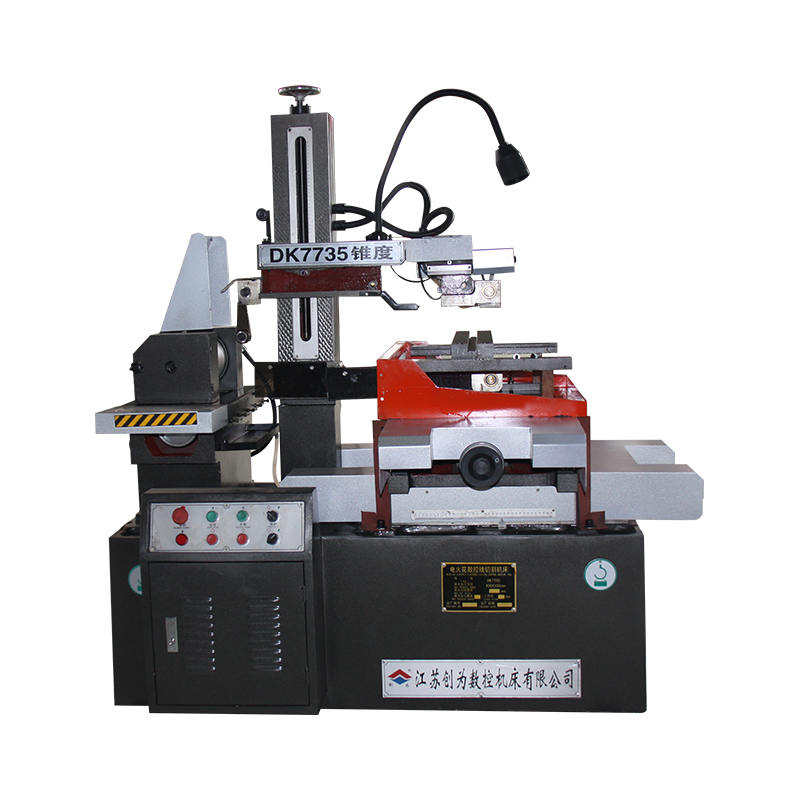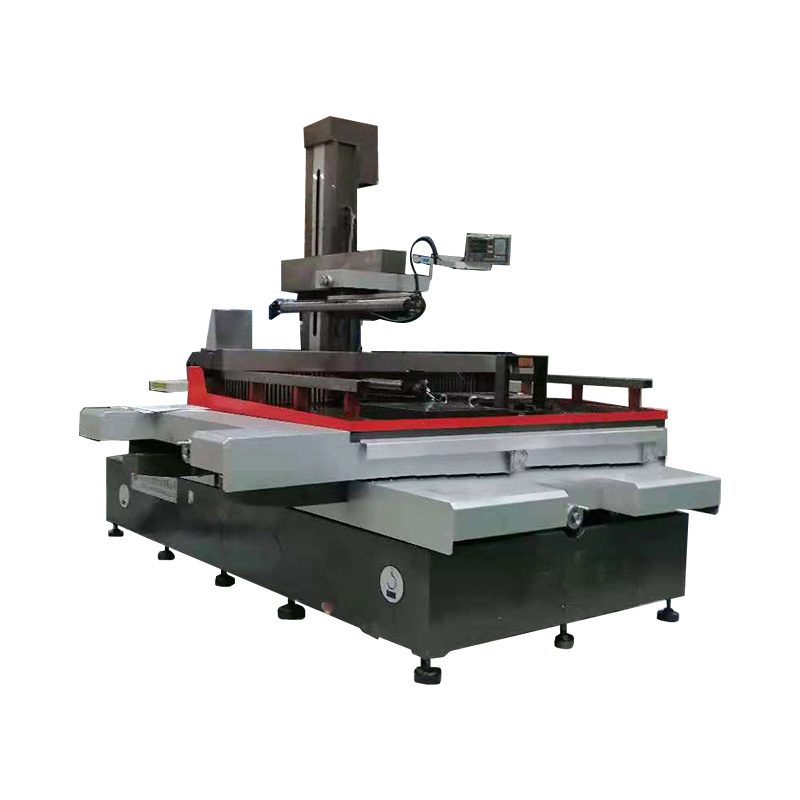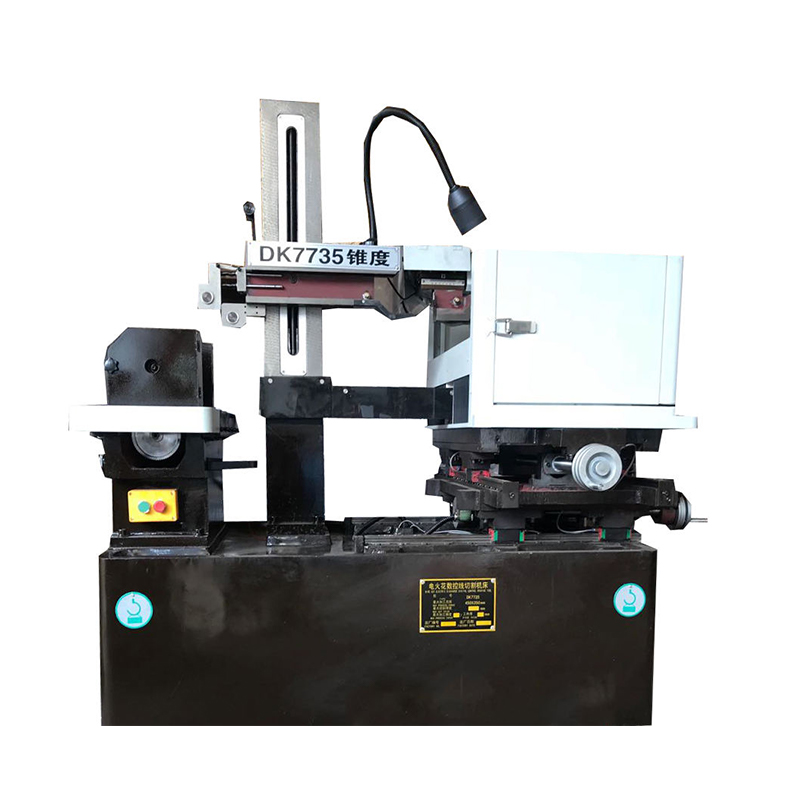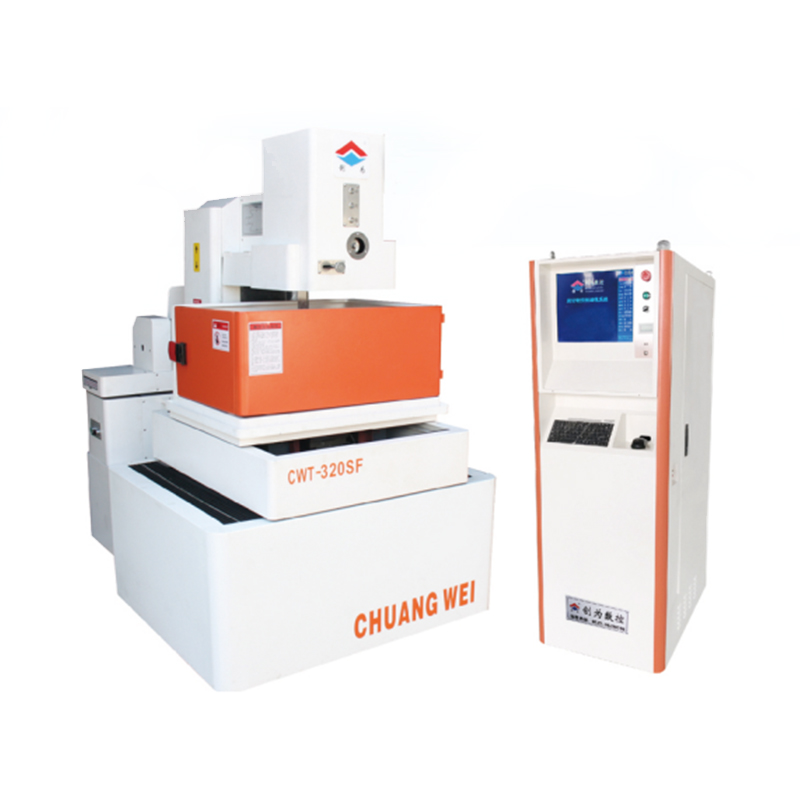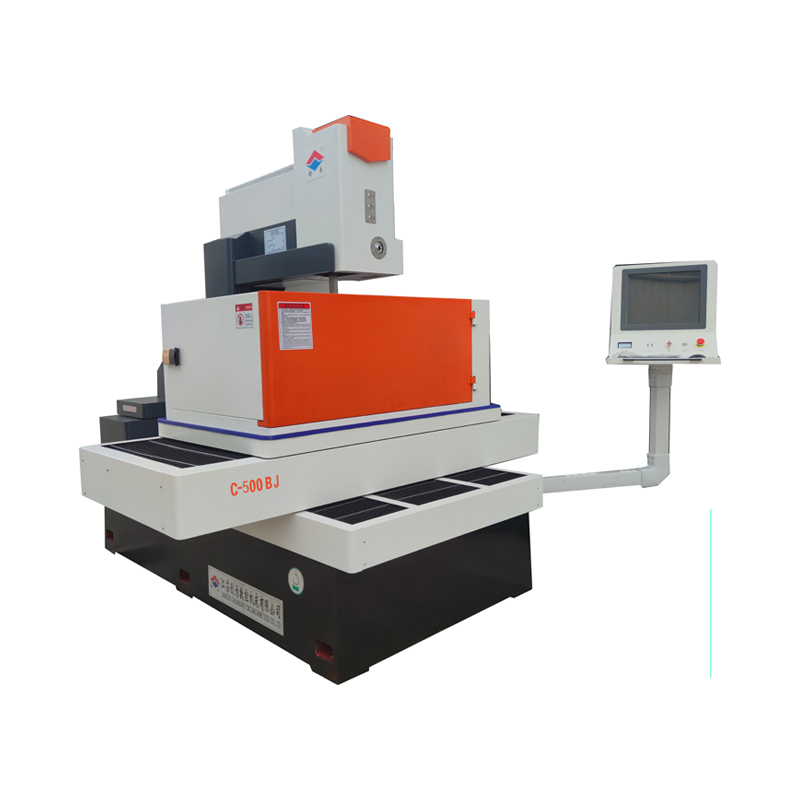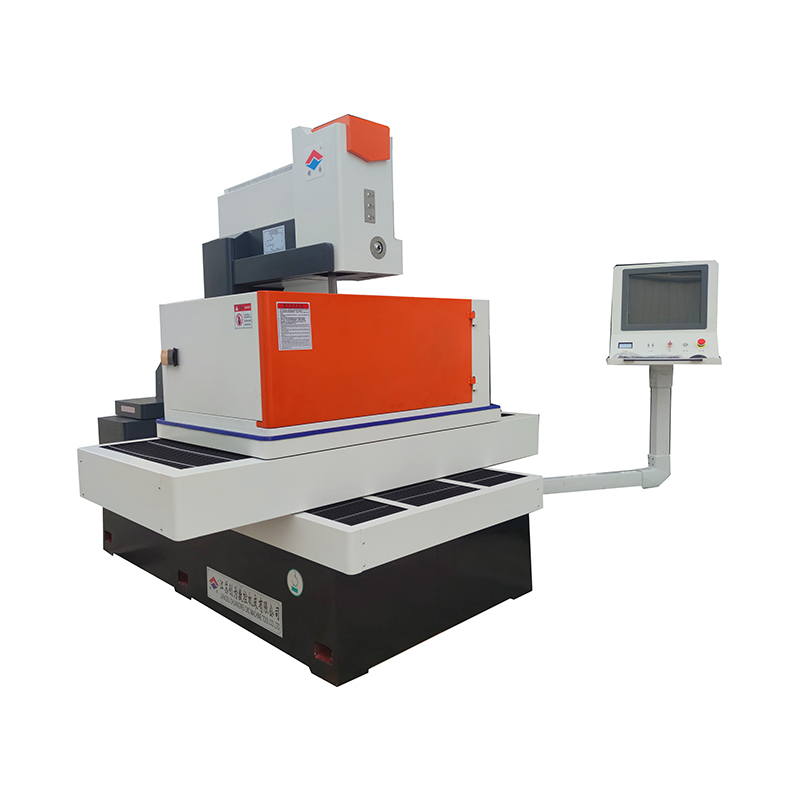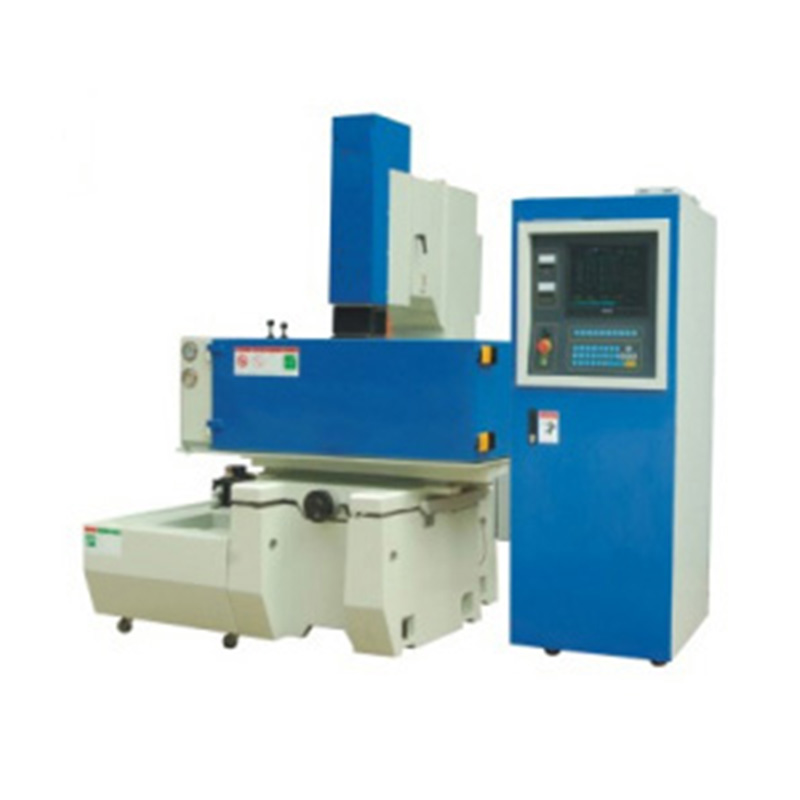How Does a Stepper CNC EDM Compare to Servo-Driven Models in Speed and Precision?
 2025.07.11
2025.07.11
 Industry news
Industry news
In the field of precision manufacturing, electrical discharge machining (EDM) plays an indispensable role in processing hard materials, complex geometries, and fine features that are difficult to process with traditional methods due to its unique non-contact processing capabilities. As the core drive system of EDM machines, stepper motors and servo motors largely determine the performance of the equipment, especially in terms of speed and precision, two critical indicators. Understanding the advantages and disadvantages of these two drive technologies in CNC EDM machines is essential for manufacturers to choose the equipment that best suits their application needs.
Features of stepper motor driven CNC EDM machines
A stepper motor is an open-loop control motor that converts electrical pulse signals into angular or linear displacements. Its working principle is to receive pulse signals from the controller and make the motor rotate a fixed step angle each time, thereby achieving precise position control. In early CNC EDM machines, stepper motors were widely used due to their relatively simple control methods, low cost, and good precision performance under specific loads.
Speed performance
The performance of stepper motors is relatively stable when running at low speeds, but its torque will drop sharply when running at high speeds, which directly limits its maximum operating speed. When the pulse frequency increases to a certain extent, the stepper motor may experience "out of step", that is, the actual rotation angle does not match the theoretical rotation angle, resulting in position error. This characteristic makes the EDM machine driven by stepper motors relatively inefficient when performing rapid positioning or processing large-sized workpieces. In addition, during the acceleration and deceleration process, stepper motors are also prone to overshoot or undershoot due to inertia, requiring additional stabilization time, further affecting the overall processing speed.
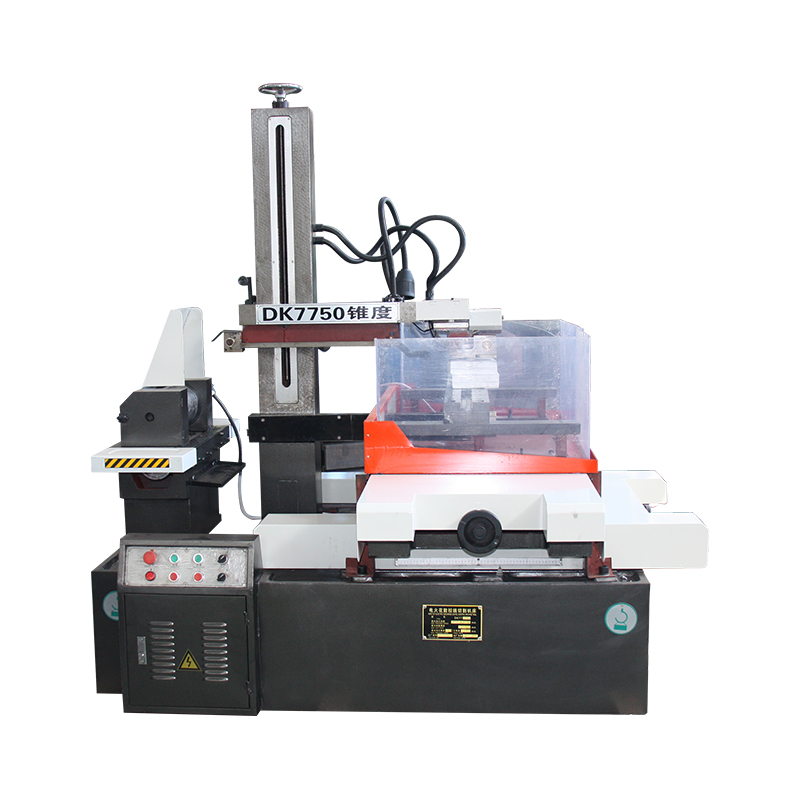
Accuracy performance
The accuracy of stepper motors mainly depends on their step angle. The smaller the step angle of a stepper motor, the higher the positioning accuracy that can be achieved in theory. Through subdivision drive technology, a step angle can be further subdivided into several microsteps, thereby improving the resolution. However, when the stepper motor works for a long time or is subject to changes in external loads, its step angle may accumulate errors, resulting in a decrease in the final processing accuracy. At the same time, due to open-loop control, the stepper motor cannot detect and correct the position error in real time. Once a step is lost, it will directly affect the processing quality. When performing high-precision and fine processing, the stepper motor may seem incapable.
Cost and maintenance
The cost of the stepper motor drive system is relatively low, the structure is simple, and the maintenance is relatively convenient. This makes the EDM machine driven by the stepper motor an economical choice for users with limited budgets or who do not require extreme processing accuracy.
Features of servo-driven CNC EDM machine tools
The servo motor is a closed-loop controlled motor, which usually forms a complete servo system with an encoder, a servo drive, and a controller. The servo system detects the position, speed, and acceleration of the motor in real time and feeds it back to the controller. The controller compares the set command with the feedback value and continuously adjusts the output to ensure that the motor accurately follows the command movement. This closed-loop control is the key to the servo system to achieve high speed and high precision.
Speed performance
The servo motor can maintain a constant torque output over a wide speed range, which means that it can maintain a strong driving force at high speeds, thereby achieving faster processing speeds. The servo system has a faster response speed and higher dynamic performance, and can complete the acceleration and deceleration process in a short time, reducing non-processing time. This significantly improves the processing efficiency for EDM machines that require frequent commutation or complex trajectory processing. For example, in the process of multi-axis linkage processing or rapid cavity removal, the advantages of servo drive are particularly obvious.
Accuracy performance
The servo system feeds back position information in real time through the encoder and compares it with the controller to form a closed-loop control. This enables the servo motor to detect and correct any position error in real time, thereby achieving extremely high positioning accuracy and repeatability. Even under the influence of external load changes or friction, the servo system can ensure accurate following of instructions through automatic compensation. High-resolution encoders can provide micron or even sub-micron feedback accuracy, allowing servo-driven EDM machines to be competent for the most demanding micro-machining and complex cavity processing tasks. For example, in fields with extremely high precision requirements such as medical devices, aerospace parts, and mold manufacturing, servo drives are an irreplaceable choice.
Cost and Maintenance
The cost of a servo drive system is usually higher than that of a stepper motor system because it contains multiple high-precision components such as servo motors, encoders, servo drives, and more complex control algorithms. However, considering its significant improvement in speed and accuracy and lower long-term operating maintenance costs (due to its higher reliability and longer service life), servo drives are a worthwhile investment for users who pursue high performance and high efficiency. Servo systems also require more professional debugging and maintenance knowledge.
Comprehensive comparison of stepper motors and servo drives in EDM machines
| feature | Stepper motor drive | Servo drive |
| speed | Stable at low speed, fast torque drop at high speed, easy to lose step | Wide speed range to maintain constant torque, fast response and good dynamic performance |
| Accuracy | Depends on step angle and subdivision, open loop control, easy to accumulate errors | Closed-loop control, real-time feedback error correction, high positioning accuracy |
| Torque output | High torque at low speed, low torque at high speed | Wide speed range, constant torque, strong overload capacity |
| Control method | Open loop control | Closed-loop control |
| Response speed | Relatively slow, with step lag | Fast, good dynamic follow-up |
| Noise and Vibration | Relatively large, especially at high speeds | Relatively small and runs smoothly |
| cost | Lower | Higher |
| Scope of application | Applications that do not require extreme speed and accuracy and have limited budgets | High speed and precision requirements, complex and micro-machining, high efficiency |
Conclusion and selection suggestions
In summary, stepper motors and servo drives each have their own characteristics and scope of application in CNC EDM machines.
Stepper motor-driven EDM machines have cost advantages and are suitable for applications that do not require extreme processing speed and precision, or have limited budgets, such as rough processing of some general molds, mass production of simple parts, etc. They are also relatively simple to operate and maintain.
Servo-driven EDM machines represent a higher level of technology and more outstanding performance. They have obvious advantages in speed, precision, dynamic response and reliability, and are ideal for high-precision, micro-machining, complex cavity machining and high-efficiency production. For industries such as aerospace, medical, precision molds, and electronic components that have strict requirements on machining quality and efficiency, investing in servo-driven EDM machines is the key to achieving high-quality production and improving market competitiveness.
When choosing EDM machines, manufacturers need to make a comprehensive trade-off based on their specific machining needs, budget, expected production efficiency, and requirements for final product quality. If you pursue extreme machining efficiency and precision, especially in the production of complex and high-value parts, then servo-driven CNC EDM machines are undoubtedly a wiser investment. If you are only doing some routine machining tasks that do not require high precision and have a limited budget, then stepper motor-driven machines can also do the job.
With the continuous advancement of technology, the cost of servo systems is gradually decreasing, and their popularity is also increasing. In the future, as the manufacturing industry continues to increase its requirements for machining accuracy and efficiency, servo-driven CNC EDM machines will undoubtedly become the mainstream choice in the market.


 English
English Español
Español
